Beagle
The Beagle's short legs can be deceiving – this medium-sized dog keeps you on your toes and is always full of surprises! This friendly breed is active, fearless and extremely clever.
Previously also known as the Italian Greyhound, the Italian Sighthound is the smallest sighthound breed. According to the breed standard, the Italian Sighthound is the prototype of tenderness and elegance. However, sighthound fans value most of all its friendly and curious nature.
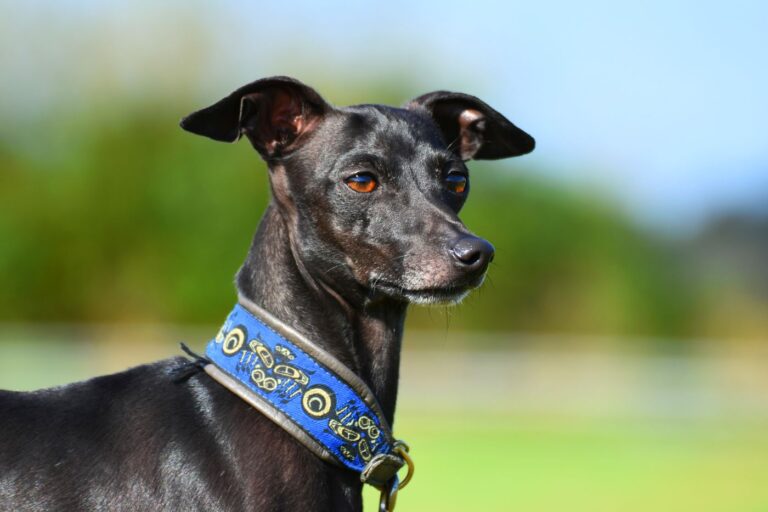
The Italian Sighthound may be smaller than other sighthounds, but it is a real character.
According to the official FCI breed standard, the Italian Sighthound belongs to the FCI group 10 – and thus to the sighthound group. These slender, elegant dogs are primarily characterised by their graceful, streamlined physique.
With an average shoulder height of 32 to 38 centimetres and a maximum weight of around 5 kilograms, the Italian Sighthound is the smallest sighthound breed.
According to the FCI standard, the physique should represent an ‘exact miniature version of a large sighthound’. The Italian Sighthound thus has a slender physique and a quadratic torso.
Its head is elongated and narrow with a flat skull. The cheeks should have as little fat as possible. The ears are set high and folded back (rosebud ears). When the sighthound is alert, the ear straightens at the base. They are then called flying or propeller ears.
The Italian Sighthound’s tail is set low and tapers towards the tip. The rear half is curved. These elegant dogs also have large, round expressive eyes with a dark iris.
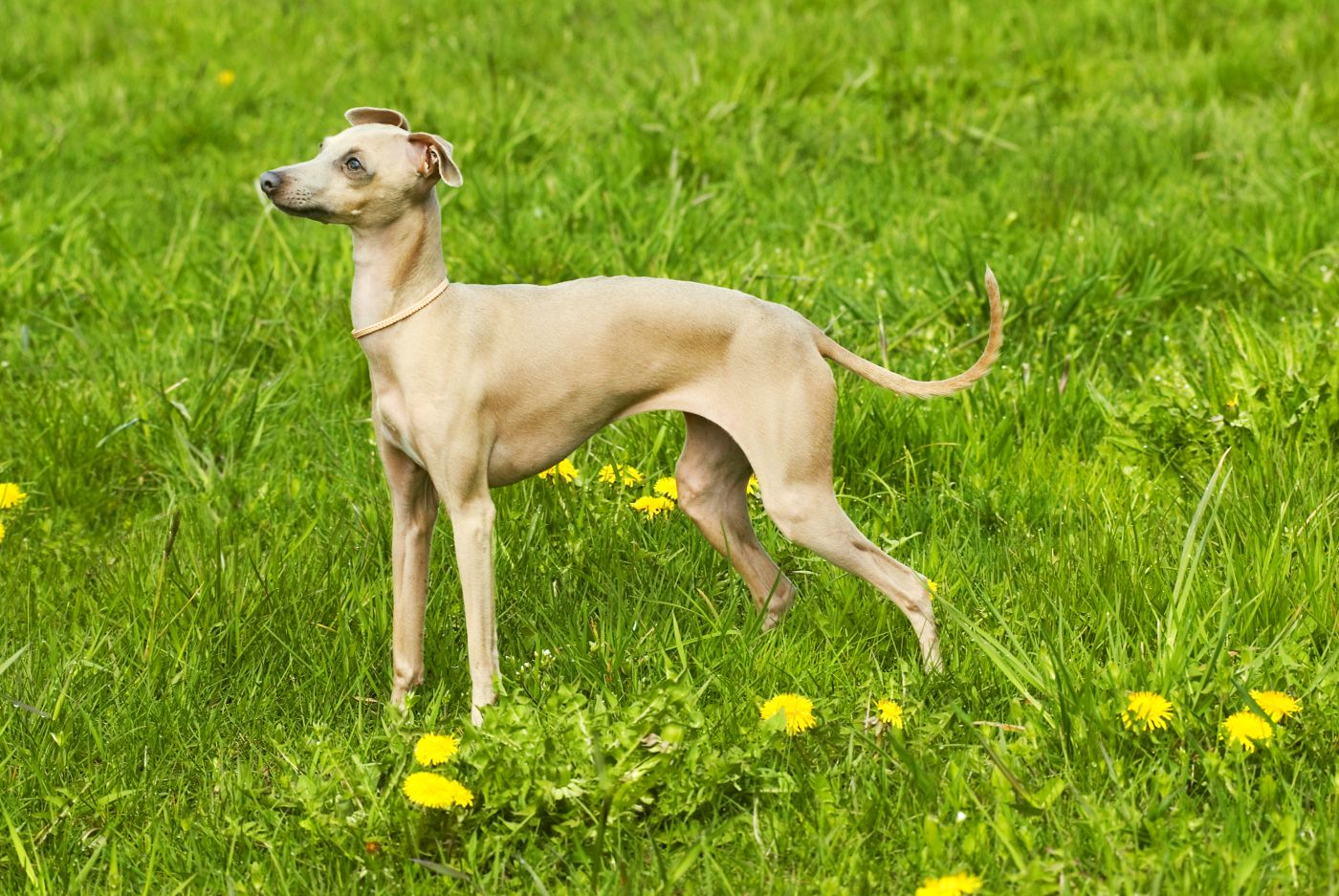 © DoraZett / stock.adobe.com
© DoraZett / stock.adobe.com
The fur of these dogs is short on the whole body, yet fine and silky. Italian Sighthounds should always be just one colour, although white markings on the chest and paws are tolerated.
These are the typical fur colours:
In addition, there is also a special fur: In the American Kennel Club, the American Italian Greyhound is recognised as an independent breed. It allows all colours apart from black, tan and brindle.
The Italian Sighthound has many names and was officially known as the Italian Greyhound until 2016. This name is still widely used today.
In Italy, its country of origin, the name Piccolo Levriero Italiano is also common.
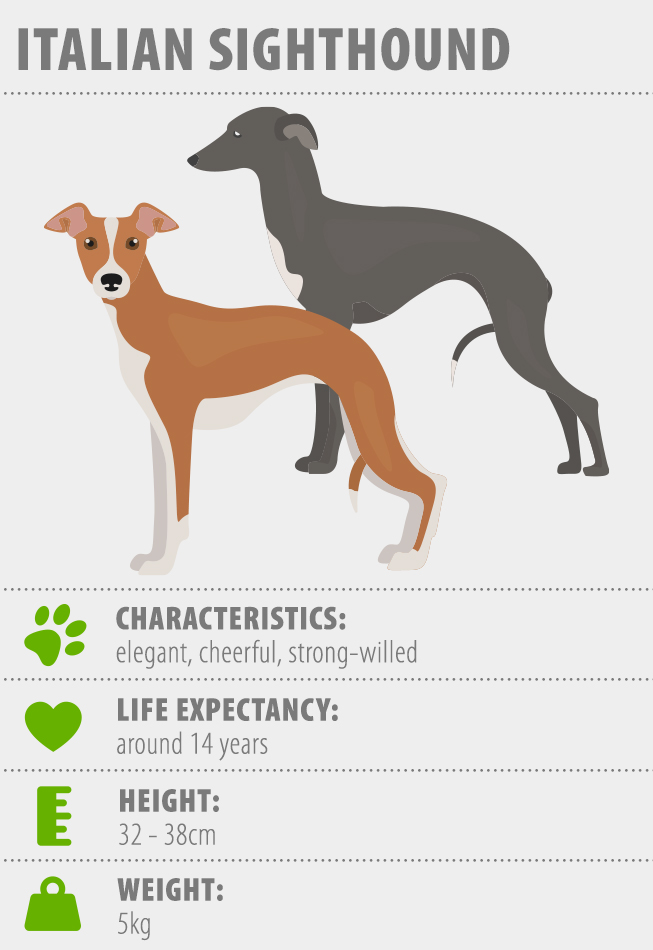 © zooplus
© zooplus
The FCI standard describes the Italian Sighthound as a ‘model of grace and distinction’. This is certainly true from a visual perspective, but this curious bundle of energy has plenty more to offer in terms of character too.
The Italian Sighthound appears delicate, almost fragile. But this first impression is deceptive, since these dogs are self-confident and tenacious.
These friendly sighthounds form a close bond with their human family and are considered quite bold. This can lead to a certain over-confidence in interactions with other dogs due to their size.
These cheerful forces of nature can become lapdogs if they’re in a cuddly mood, but only for as long as they want. At the same time, they are often so exuberant that they want to lick their owner and keep them company everywhere – be it on the sofa or in bed.
Nevertheless, Italian Sighthounds are definitely no couch potatoes and want to experience plenty. This is why they constantly demand attention and take it if they don’t get it.
Some fans of the breed lovingly describe their dogs as little nuisances. The Italian Sighthound therefore makes high demands of its owners.
The Italian Sighthound learns quickly as it is intelligent, but it has no significant will-to-please when it comes to training. Total obedience isn’t a priority for sighthounds. Hence, consistency is particularly important with this breed. This is all the more true because these little dogs can be very assertive.
The Italian Sighthound has centuries of hunting by sight and giving chase in its blood. If it sees a rabbit at a distance, this can trigger its hunting instinct. If you would like to allow your Italian Sighthound to roam freely outdoors, you should start with anti-hunting training as early as the puppy stage.
Since the breeder forms a close bond with its owner and is happiest being everywhere, early training related to spending time alone is particularly important.
Does the sighthound bark a lot? Most dogs of this breed are less communicative and bark relatively rarely. However, there are of course others that do like to bark more. In this case, you should be aware of how you can stop your four-legged friend from barking.
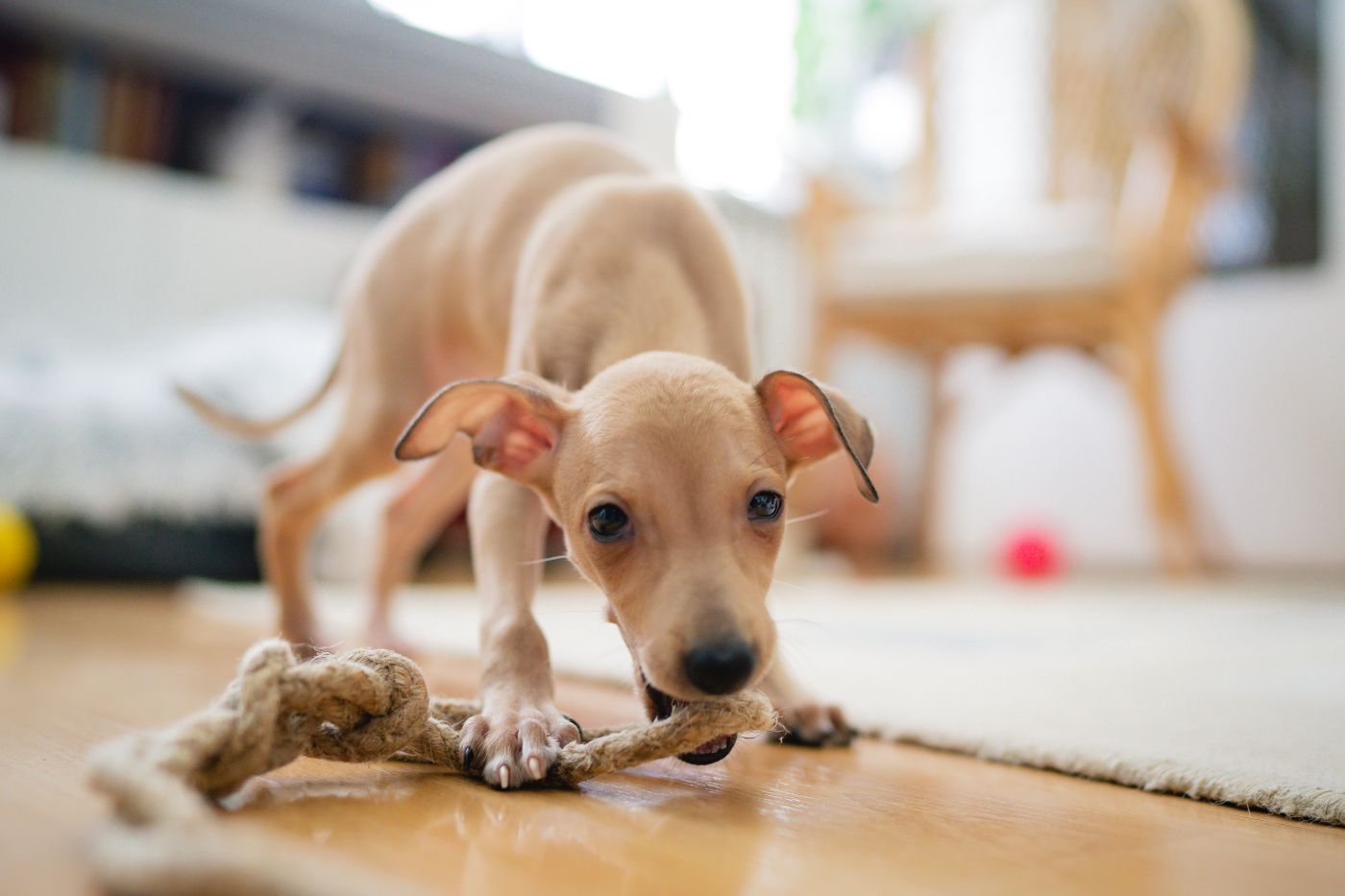 © Pavel Kašák / stock.adobe.com
© Pavel Kašák / stock.adobe.com
Although the Italian Sighthound is small, it makes great demands of its owners.
The Italian Sighthound is a challenging dog. Hence, it is primarily suited to experienced dog lovers who can cope with the sometimes intense approach of this little whirlwind.
A safely fenced property with a garden to play in is ideal for this dog breed. Although the Italian Sighthound can stay alone for a few hours after the right training, you’re better off planning holidays with your four-legged companion.
The Italian Sighthound gets on well with small children. However, this can soon result in falls or unintentional injuries to this delicate dog breed. It’s therefore a better fit for older children.
If dogs of other breeds live in the household, the sighthound will usually take the lead sooner or later. It only has limited respect for the other dog’s sleeping spot, food or toys. Nevertheless, the breed is very sociable and enjoys contact with other dogs, although it is best suited to other sighthounds.
In contrast, grooming is thankfully no challenge with Italian Sighthounds, as the short fur has no undercoat and doesn’t get matted.
A grooming glove or soft brush helps to pick up loose hairs. At the same time, this type of grooming strengthens your bond with your dog. Checking the ears and paws is also part of a regular grooming routine.
The Italian Sighthound loves exercise, so you should let it get plenty of exercise and activity. In any case, at least one long, varied walk per day is compulsory.
Ideally allow your Italian Sighthound to safely run freely once a day. This should only take place in fenced areas if your dog cannot be retrieved reliably.
What else? Find out what you and your Italian Sighthound enjoy. There are many different exciting types of dog sport. Possibilities include coursing, agility for small dogs, scent tasks like man-trailing, retrieval, dog dancing and learning different dog tricks.
Attention: Along with all these activities, it’s also important that this breed learns to relax. This way, you prevent it from getting overexcited.
Incidentally, anyone interested in greyhounds should see a greyhound race at least once. If you’re interested, contact a racing association in your area. They of course have nothing in common with brutal greyhound racing known from Spain, amongst other places.
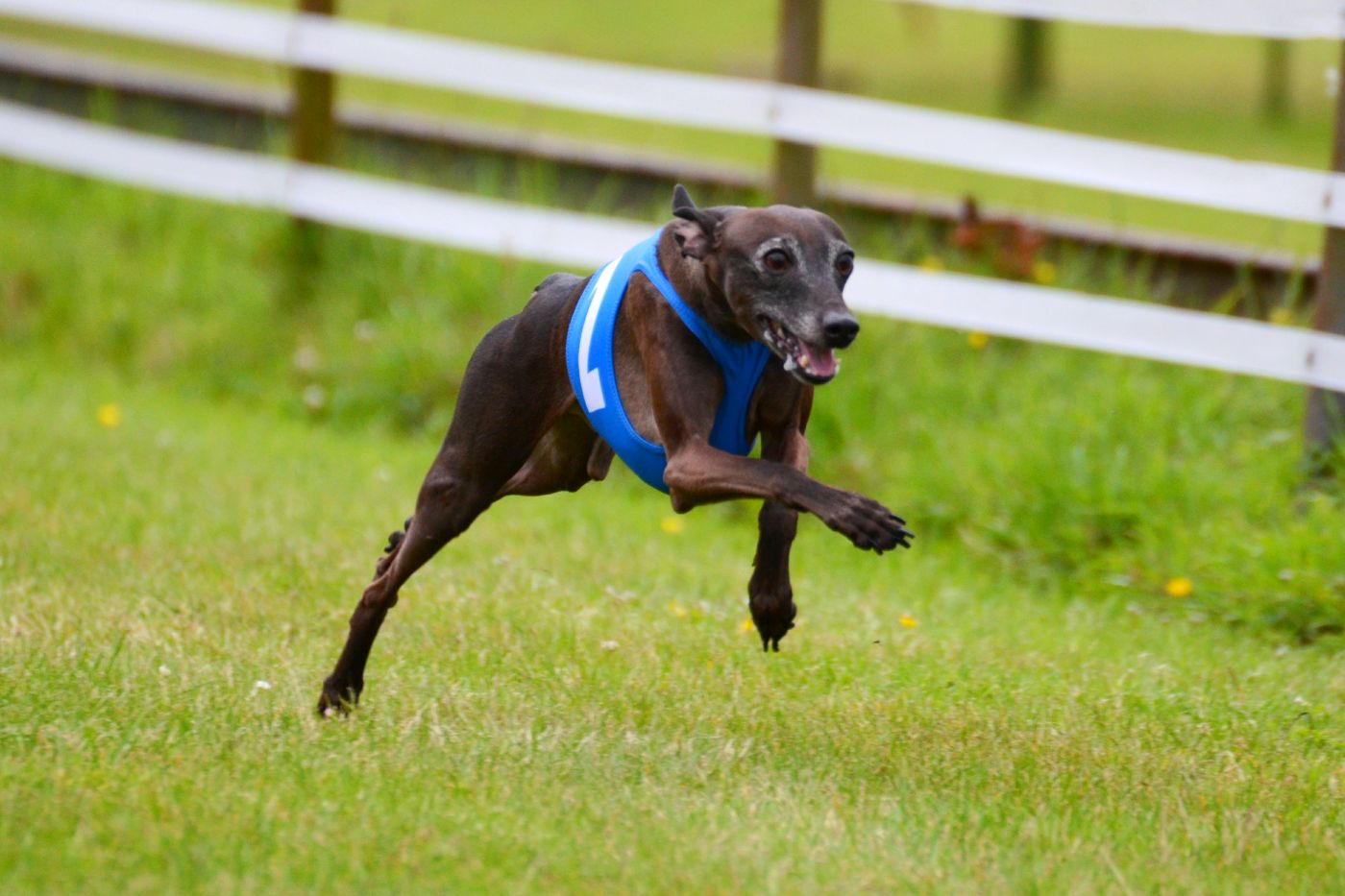 © mfotohaus / stock.adobe.com
© mfotohaus / stock.adobe.com
The appearance of these lightweight canines is deceptive, because they are considered robust and like to spend time outdoors. However, these little dogs do get cold quickly, so it makes sense to keep a warming dog blanket on hand for them in winter. Many sighthounds also appreciate having a raincoat in rainy weather.
Unfortunately these little bundles of energy sometimes overestimate themselves, which can result in injuries from falls or playing with larger dogs. If well cared for with a species-appropriate diet, Italian Sighthounds can remain agile into old age.
Reputable breeders also take precautions: Many diseases with genetic components can nowadays be ruled out thanks to DNA tests. These include ocular diseases like progressive retinal atrophy or lens luxation. A patella examination is also a matter of course for responsible breeders.
If in good health, the Italian Sighthound reaches an average age of 14 years.
The little Italian Sighthound is one of the oldest sighthound breeds. Around 500 BC, it arrived to Italy from Greece.
These lightweight Italian dogs later had many fans in the European aristocracy. The most famous friend of these little sighthounds was a significant historical figure: Frederick the Great, King of Prussia (1712-1786). There is a famous bronze sculpture of the king by Johann Gottfried Schadow, where he is seen with his two sighthounds Alcmène and Hasenfuß.
Catherine the Great (1729-1786) and Queen Victoria (1819-1901) also owned dogs of this type. The Italian Sighthound also adorns numerous Renaissance paintings.
Have you made your decision and want to give an Italian Sighthound a home? We will give you a few purchasing tips.
The price for buying an Italian Sighthound is around 1,500 euros. If you want one, you should only contact a reputable breeder.
But there are other ways to find an Italian Sighthound – and to do some good at the same time: If you would like to offer a sighthound from an animal shelter a new home, you can look on the animal shelter websites for your dream dog.
Have you fallen for the elegant appearance of these sighthounds? Perhaps you may like many other sighthound breeds too.
Whippets, imposing Greyhounds and Silken Windhounds, not recognised by the FCI, form a close bond with their owners. All these sighthounds are considered people-focused, but are less invasive and much bigger than the Italian Sighthound.
An insider tip for fans of small dog breeds is also the Danish-Swedish farm dog Dansky, officially recognised by the FCI in 2019. It needs less exercise than a sighthound, but just as much attention.
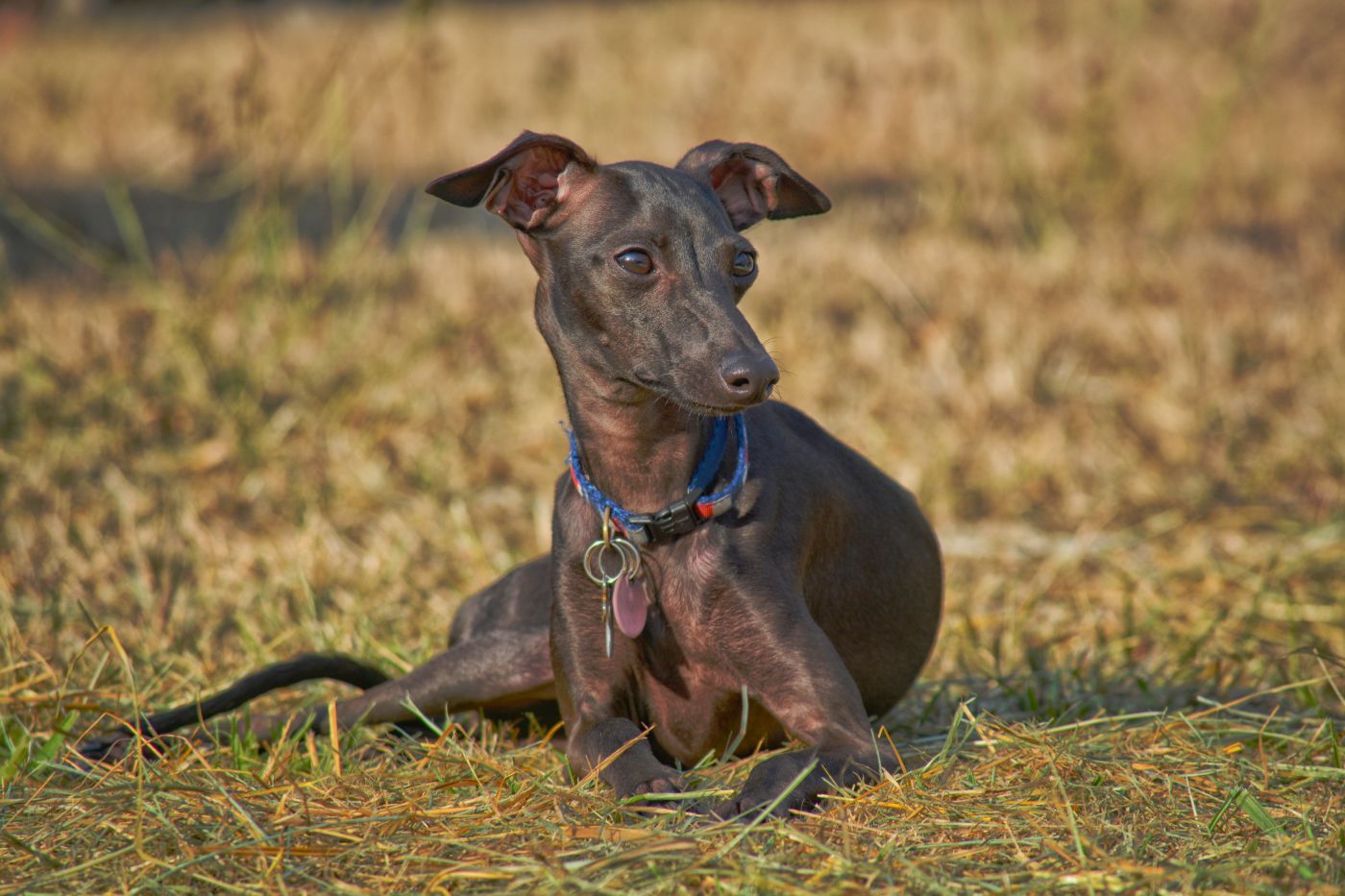 © Elena / stock.adobe.com
© Elena / stock.adobe.com
As cute as these dogs may look, Italian Sighthounds aren’t suitable for all dog lovers. They are cheeky charmers who will put the patience of their owners to the test with their curiosity and temperament.
But for most dog lovers, it’s once a sighthound, always a sighthound! Because these little characters know exactly how to win over their fans.
The Beagle's short legs can be deceiving – this medium-sized dog keeps you on your toes and is always full of surprises! This friendly breed is active, fearless and extremely clever.
The Golden Retriever is still one of the most popular dog breeds, especially with families. It is defined not just by its docility, but shows numerous other qualities too. Read in the following article everything you need to know about the Golden Retriever.
The German Shepherd is one of the most popular utility dog breeds in the world, though the willing-to-learn and people-focused nature of these versatile dogs also makes them suitable for family life.